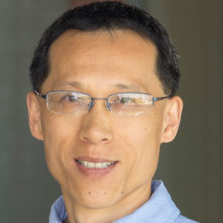Cancer Cell Biology in Biological Hydrogel
A special issue of Gels (ISSN 2310-2861). This special issue belongs to the section "Gel Processing and Engineering".
Deadline for manuscript submissions: closed (31 August 2023) | Viewed by 19545
Special Issue Editor
Special Issue Information
Dear Colleagues,
Biocompatible and biodegradable hydrogels fabricated from natural biomaterials have been widely used in biomedical research, bioengineering, drug delivery, and pharmaceutical applications. Biological hydrogels or composite hydrogels containing extracellular matrix (ECM) proteins, bioactive material, or peptides, such as collagen, fibronectin, laminin, hyaluronic acid, elastin, glycosaminoglycans, alginate, etc., have demonstrated great capabilities in advancing our understanding of cell biology in native tissue microenvironments, human physiological and pathological conditions. To further advance the field and provide a forum for scientific discussion on applications of biological hydrogel in cancer biology research, we welcome colleagues from various scientific fields to contribute research findings and review articles to this Special Issue for publication in Gels. The areas of interest include but are not limited to:
- Compositional or/and structural properties of hydrogel related to cancer cell activities in hydrogel cultures;
- Biological activities of cancer cells, such as growth, proliferation, differentiation, migration, invasion, transcription, translation, and molecular trafficking, regulated by hydrogels, hydrogel component(s), extracellular signals, or exogenous molecules;
- Fabrication of biological hydrogel for cancer research;
- Proteomics or metabolomics studies of molecular aspects of cancer cells biology in hydrogel;
- DNA or RNA sequencing studies of gene expression and its regulation in hydrogel-based cancer cell culture models;
- Immunological responses of cancer cells in biological hydrogel;
- Hydrogel three-dimensional (3D) tissue culture studies of cancer cell biology;
- Imaging studies of cancer cell biology in biological hydrogels;
- Bioengineering using biological hydrogels for cancer cell biology studies;
- Cancer cell animal models related to hydrogel applications;
- Anticancer drug testing or delivery with biological hydrogel;
- Computational analysis or modeling of biological hydrogel applications in cancer biology.
Dr. Weimin Li
Guest Editor
Manuscript Submission Information
Manuscripts should be submitted online at www.mdpi.com by registering and logging in to this website. Once you are registered, click here to go to the submission form. Manuscripts can be submitted until the deadline. All submissions that pass pre-check are peer-reviewed. Accepted papers will be published continuously in the journal (as soon as accepted) and will be listed together on the special issue website. Research articles, review articles as well as short communications are invited. For planned papers, a title and short abstract (about 100 words) can be sent to the Editorial Office for announcement on this website.
Submitted manuscripts should not have been published previously, nor be under consideration for publication elsewhere (except conference proceedings papers). All manuscripts are thoroughly refereed through a single-blind peer-review process. A guide for authors and other relevant information for submission of manuscripts is available on the Instructions for Authors page. Gels is an international peer-reviewed open access monthly journal published by MDPI.
Please visit the Instructions for Authors page before submitting a manuscript. The Article Processing Charge (APC) for publication in this open access journal is 2600 CHF (Swiss Francs). Submitted papers should be well formatted and use good English. Authors may use MDPI's English editing service prior to publication or during author revisions.
Keywords
- hydrogel
- fabrication and characterization
- structures and mechanics
- composition
- cancer cell biology
- bioactivities
- 3D culture
- -omics analysis
- DNA/RNA sequencing
- gene expression
- imaging
- bioengineering
- drug delivery
- computation
- animal model






